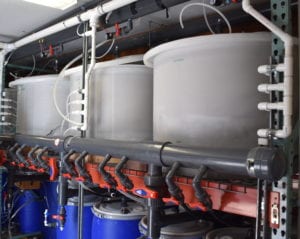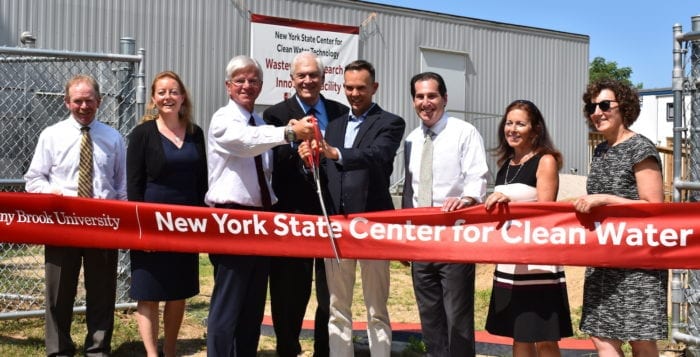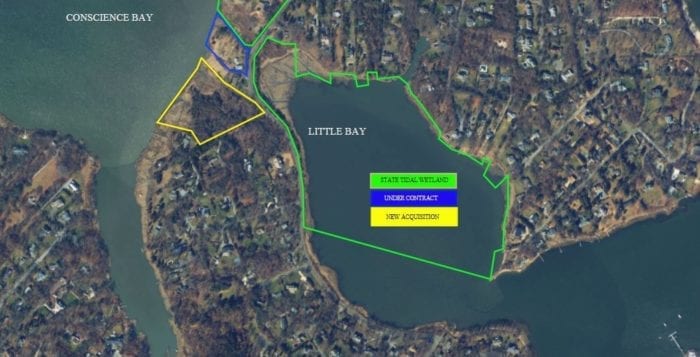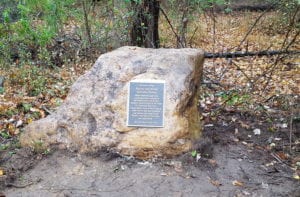A new research facility at Stony Brook University aims to develop innovative technologies in the fight to improve the quality of water on Long Island and help rid nitrogen in wastewater in an effort to protect drinking water.

On July 9, the New York State Center for Clean Water Technology at SBU officially opened the new research site named the Wastewater Research & Innovation Facility. The WRIF will have nitrogen-removing technologies to clean wastewater. The new facility is situated close to a county wastewater pumping station.
“We all know how important water is to Long Island, we know our only source of drinking water is below our feet,” said Chris Gobler, director, NYS Center for Clean Water Technology. “This facility is designed to bring the next generation of nitrogen reducing and removing biofilters [also called NRBs] that will be smaller and more effective and more widespread.”
The WRIF’s main area is a trailer full of nitrogen-removing biofilters made up of two levels: a layer of sand on top and a layer of wood chips on the bottom. Wastewater flows down, and each layer take out the nitrogen as it goes through.
“Our focus is to take what we have installed in the field, these NRBs and make them smaller and want to make it more affordable,” said Frank Russo, associate director for wastewater initiatives, NYS Center for Clean Water Technology. “The only way we can do that on a scale like this is to do experiments first in a set environment and test all the theories we find in our research.”
There are 22 SBU students and researchers on staff at the new facility. A secondary trailer on the property allows them to conduct experiments and research at a test tube level.
The endgame of those experiments is to eventually install these filters in homes and businesses, so it can help reduce nitrogen pollution.
Russo said it will take a five-year process before they go full scale. He stated that it is a county requirement that before anything is to be installed, you have to show the county that it is a proven technology, and it will last a long time.
The associate director hopes these filters along with a home septic system will one day take the place of a cesspool.
The opening of the new facility, comes a year after the center installed three prototype filters in homes throughout Long Island. The center has also been busy with other projects, including constructing a wetland in Cold Spring Harbor that is designed to treat wastewater and nitrogen levels.
Gobler stressed the need for reducing nitrogen pollution, stating that nearly 75 percent of Suffolk homes are not connected to a sewage system. The problem arises when the nitrogen-contaminated wastewater is stored into cesspools or outdated septic systems.
“The center is going to help address and solve the nitrogen problem on Long Island, but perhaps across the country and maybe even around the world,” said Carrie Meek-Gallagher, regional director of the NYS Department of Environmental Conservation.
In 2017, the county began urging residents to make the switch to new, updated septic systems under the Suffolk County Septic Improvement Program with the help of grants.
As of July 1, Suffolk County residents who voluntarily decide to replace their cesspools will need to replace them with a system consisting of a septic tank and leaching pool at a minimum, according to a June 20 TBR News Media article. Contractors will need to register the system with the Department of Health Services. While residents can choose a conventional septic system, another option is an advanced device that removes more nitrogen. County grants of up to $20,000 are available for residents who qualify. There is also an additional state grant of up to $10,000, which can mean a total of up to $30,000.







